
Shell
Proud winner of ABECA 2024 - AmbitionBox Employee Choice Awards
Filter interviews by
Shell Piping Engineer Interview Questions and Answers
Shell Piping Engineer Interview Experiences
1 interview found
(3 Questions)
- Q1. General introduction and technical questions
- Q2. Asked me to explain about me
- Q3. Previous experience and challenges faced
Top trending discussions






Interview questions from similar companies

I applied via Naukri.com and was interviewed in Feb 2024. There were 2 interview rounds.
Question answer related piping job ,material related, manpower handling etc...
(5 Questions)
- Q1. Piping related question, Piping material astm code
- Q2. Types of piping drawing
- Ans.
Types of piping drawings include Piping and Instrumentation Diagrams (P&IDs), Isometric drawings, and Orthographic drawings.
Piping and Instrumentation Diagrams (P&IDs) show the piping system along with instruments and control devices.
Isometric drawings show the 3D representation of the piping system.
Orthographic drawings show the top, front, and side views of the piping system.
- Q3. Difference b/w construction and fabrication drawing?
- Ans.
Construction drawings show how a structure will be built, while fabrication drawings provide detailed instructions for manufacturing individual components.
Construction drawings focus on overall structure layout and dimensions
Fabrication drawings provide detailed instructions for manufacturing individual components
Construction drawings are used by contractors on site, fabrication drawings are used by manufacturers in wo...
- Q4. Piping material code ?
- Ans.
Piping material code refers to the standards and specifications used for selecting materials for piping systems.
Piping material codes are used to ensure the proper selection of materials based on factors like pressure, temperature, and fluid being transported.
Common piping material codes include ASME B31.3 for process piping, ASTM for materials specifications, and API for oil and gas piping.
These codes provide guidelin...
- Q5. Difference b/w pipe and tubes
- Ans.
Pipes are used to transport fluids or gases, while tubes are used for structural applications or heat transfer.
Pipes are measured by their inside diameter, while tubes are measured by their outside diameter.
Pipes are typically round in shape, while tubes can be round, square, or rectangular.
Pipes are commonly used in plumbing, HVAC systems, and oil and gas industries, while tubes are used in construction, automotive, a
Interview Preparation Tips
- Piping
- Statatic Equipment
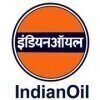
Interview Questionnaire
4 Questions
- Q1. How many type gasket
- Ans.
There are several types of gaskets used in piping engineering.
There are different types of gaskets based on their material composition, such as rubber gaskets, metal gaskets, and non-metallic gaskets.
Gaskets can also be classified based on their shape, including spiral wound gaskets, ring joint gaskets, and solid gaskets.
Each type of gasket has its own specific application and sealing properties.
For example, rubber gas...
- Q2. How many type of piping
- Ans.
There are several types of piping used in various industries.
Process piping
Utility piping
Hygienic piping
High-pressure piping
Low-pressure piping
Underground piping
Aboveground piping
- Q3. What is welding filar
- Ans.
Welding filar is a type of welding wire used in the welding process.
It is a consumable wire electrode used in welding.
It is made of various materials such as stainless steel, aluminum, and copper.
The wire is fed through a welding gun and melted to join two metal pieces together.
The size and type of welding filar used depends on the type of metal being welded and the welding process being used.
- Q4. What is flare system.
- Ans.
A flare system is a safety device used in refineries and chemical plants to burn off excess gases and prevent explosions.
Flare systems are used to burn off excess gases that cannot be processed or stored.
They are designed to prevent explosions by safely disposing of flammable gases.
Flare systems are typically used in refineries, chemical plants, and oil rigs.
They consist of a tall stack with a burner at the top, which ...
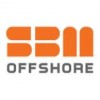
I applied via Recruitment Consulltant and was interviewed in Oct 2024. There was 1 interview round.
(2 Questions)
- Q1. What is spec brakes
- Ans.
Spec brakes refer to the specifications or requirements for brakes used in a particular system or application.
Spec brakes outline the specific design, materials, and performance criteria for brakes in a system.
They ensure that the brakes meet the necessary standards for safety and functionality.
Examples of spec brakes include requirements for brake pad material, brake disc size, and braking force.
Spec brakes may also i...
- Q2. Primary and secondary support
Interview Preparation Tips
- Aveva e3d
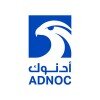
I applied via Naukri.com and was interviewed in Nov 2022. There were 2 interview rounds.

(13 Questions)
- Q1. How much carbon percentage in Carbon Steel
- Ans.
The carbon percentage in carbon steel varies from 0.05% to 2.0% depending on the grade.
Carbon steel is an alloy of iron and carbon.
The amount of carbon in carbon steel determines its strength and hardness.
Low carbon steel contains less than 0.3% carbon, while high carbon steel contains more than 0.6% carbon.
Some common grades of carbon steel and their carbon percentage are: A36 (0.26%), 1018 (0.18%), and 1045 (0.45%).
- Q2. What is difference between concentric and eccentric reducer
- Ans.
Concentric reducers have a common centerline while eccentric reducers have an offset centerline.
Concentric reducers are used in vertical piping systems to prevent accumulation of air pockets.
Eccentric reducers are used in horizontal piping systems to prevent accumulation of solids or liquids.
Concentric reducers are symmetrical while eccentric reducers are not.
Concentric reducers are easier to manufacture and install th
- Q3. Which reinforcement fittings used in piping
- Ans.
Reinforcement fittings are used to strengthen and support piping systems.
Common reinforcement fittings include tees, elbows, reducers, and couplings.
Telescoping fittings are used to adjust the length of piping systems.
Flange fittings are used to connect pipes to other equipment or structures.
Saddles are used to support piping systems on walls or ceilings.
Reinforcement fittings can be made of various materials, includin...
- Q4. Why elbo let used in piping
- Ans.
Elbow lets change the direction of flow in piping system.
Elbows are used to change the direction of flow in a piping system.
They come in different angles such as 45°, 90° and 180°.
They are available in different materials such as PVC, copper, steel, etc.
Elbows can be welded or threaded onto the piping system.
They are commonly used in plumbing, HVAC, and industrial piping systems.
- Q5. If we have to replace bypass valve on top of vessel and plant is running, then how to replace that valve ??
- Ans.
The bypass valve can be replaced by isolating the vessel, depressurizing it, and then replacing the valve.
Isolate the vessel by closing the inlet and outlet valves
Depressurize the vessel by venting the gas or liquid
Remove the old valve and install the new one
Repressurize the vessel and open the inlet and outlet valves
- Q6. What is Permit to work
- Ans.
Permit to work is a formal written system used to control high-risk activities.
It is a document that outlines the work to be done and the hazards associated with it.
It is used to ensure that all necessary safety precautions are taken before work begins.
It is issued by a competent authority and must be signed by all parties involved in the work.
Examples include hot work permits, confined space permits, and excavation pe
- Q7. Tell me about yourself and your experience
- Q8. What is isolation and how many types of isolation
- Ans.
Isolation is the process of separating a system or equipment from its energy source to ensure safety during maintenance or repair.
Isolation involves disconnecting a system or equipment from its power source, locking it out, and tagging it to prevent accidental re-energization.
There are two types of isolation: electrical isolation and mechanical isolation.
Electrical isolation involves disconnecting the electrical supply...
- Q9. What is positive isolation
- Ans.
Positive isolation is the process of completely isolating a section of a system to prevent any flow or transfer of material.
Positive isolation is achieved by using valves, blinds, or other physical barriers to completely block the flow of material.
It is important for safety and maintenance purposes, as it allows workers to safely perform tasks without the risk of exposure to hazardous materials.
Examples of positive iso...
- Q10. How to do positive isolation
- Ans.
Positive isolation is the process of completely isolating a section of piping or equipment from the rest of the system to perform maintenance or repairs.
Identify the section of piping or equipment that needs to be isolated
Close all valves and block all lines leading to and from the section
Use blind flanges or spectacle blinds to physically block the section
Ensure that the isolation is secure and pressure tested before ...
- Q11. When we do nitrogen purging and why it's required
- Ans.
Nitrogen purging is done to remove impurities and oxygen from pipelines before commissioning or maintenance work.
Nitrogen purging is done to create an inert atmosphere inside the pipeline to prevent explosions or fires.
It is required before commissioning or maintenance work to remove impurities and oxygen from the pipeline.
Nitrogen purging is also done to prevent corrosion and contamination of the pipeline.
It is common...
- Q12. What is difference between pipe and tube
- Ans.
Pipes are used to transport fluids and gases, while tubes are used for structural purposes.
Pipes have a standardized outer diameter and wall thickness, while tubes have a standardized inner diameter and wall thickness.
Pipes are typically round, while tubes can be round, square, or rectangular.
Pipes are often used in plumbing and HVAC systems, while tubes are used in construction and engineering applications.
Pipes are u...
- Q13. Which pipe material or standard used in past experience
- Ans.
I have experience working with various pipe materials and standards including carbon steel, stainless steel, and PVC.
I have worked with carbon steel pipes in a power plant project.
I have also worked with stainless steel pipes in a pharmaceutical plant project.
In a water treatment plant project, I have worked with PVC pipes.
I am familiar with ASME B31.3, API 5L, and ASTM standards for pipe materials and welding procedur
Interview Preparation Tips
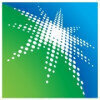
I applied via Referral and was interviewed before Dec 2021. There were 3 interview rounds.

1. What are the jointing procedures for HDPE pipe?
2. What are the minimum distance from the Equipment's to Fire hose reel?
3. What is the test pressure for fire water pipeline?
What is the reference aramco SAES standard for gaskets?
Interview Preparation Tips

I applied via Naukri.com and was interviewed in Feb 2024. There were 2 interview rounds.
Question answer related piping job ,material related, manpower handling etc...
(5 Questions)
- Q1. Piping related question, Piping material astm code
- Q2. Types of piping drawing
- Ans.
Types of piping drawings include Piping and Instrumentation Diagrams (P&IDs), Isometric drawings, and Orthographic drawings.
Piping and Instrumentation Diagrams (P&IDs) show the piping system along with instruments and control devices.
Isometric drawings show the 3D representation of the piping system.
Orthographic drawings show the top, front, and side views of the piping system.
- Q3. Difference b/w construction and fabrication drawing?
- Ans.
Construction drawings show how a structure will be built, while fabrication drawings provide detailed instructions for manufacturing individual components.
Construction drawings focus on overall structure layout and dimensions
Fabrication drawings provide detailed instructions for manufacturing individual components
Construction drawings are used by contractors on site, fabrication drawings are used by manufacturers in wo...
- Q4. Piping material code ?
- Ans.
Piping material code refers to the standards and specifications used for selecting materials for piping systems.
Piping material codes are used to ensure the proper selection of materials based on factors like pressure, temperature, and fluid being transported.
Common piping material codes include ASME B31.3 for process piping, ASTM for materials specifications, and API for oil and gas piping.
These codes provide guidelin...
- Q5. Difference b/w pipe and tubes
- Ans.
Pipes are used to transport fluids or gases, while tubes are used for structural applications or heat transfer.
Pipes are measured by their inside diameter, while tubes are measured by their outside diameter.
Pipes are typically round in shape, while tubes can be round, square, or rectangular.
Pipes are commonly used in plumbing, HVAC systems, and oil and gas industries, while tubes are used in construction, automotive, a
Interview Preparation Tips
- Piping
- Statatic Equipment

Interview Questionnaire
4 Questions
- Q1. How many type gasket
- Ans.
There are several types of gaskets used in piping engineering.
There are different types of gaskets based on their material composition, such as rubber gaskets, metal gaskets, and non-metallic gaskets.
Gaskets can also be classified based on their shape, including spiral wound gaskets, ring joint gaskets, and solid gaskets.
Each type of gasket has its own specific application and sealing properties.
For example, rubber gas...
- Q2. How many type of piping
- Ans.
There are several types of piping used in various industries.
Process piping
Utility piping
Hygienic piping
High-pressure piping
Low-pressure piping
Underground piping
Aboveground piping
- Q3. What is welding filar
- Ans.
Welding filar is a type of welding wire used in the welding process.
It is a consumable wire electrode used in welding.
It is made of various materials such as stainless steel, aluminum, and copper.
The wire is fed through a welding gun and melted to join two metal pieces together.
The size and type of welding filar used depends on the type of metal being welded and the welding process being used.
- Q4. What is flare system.
- Ans.
A flare system is a safety device used in refineries and chemical plants to burn off excess gases and prevent explosions.
Flare systems are used to burn off excess gases that cannot be processed or stored.
They are designed to prevent explosions by safely disposing of flammable gases.
Flare systems are typically used in refineries, chemical plants, and oil rigs.
They consist of a tall stack with a burner at the top, which ...

I applied via Referral and was interviewed in Jul 2022. There were 2 interview rounds.

(3 Questions)
- Q1. Fpso module experience
- Ans.
Yes, I have experience in designing modules for FPSOs.
I have designed modules for FPSOs such as process modules, utility modules, and accommodation modules.
I am familiar with the requirements and standards for FPSO module design, such as DNVGL-ST-0358 and ABS Guide for Building and Classing Floating Production Installations.
I have worked with various software tools for module design, such as PDMS, E3D, and AutoCAD.
I ha...
- Q2. Slops of fpso from foreword to aft and aft to foreword
- Ans.
The slops of an FPSO from forward to aft and aft to forward.
Slops refer to the angle of inclination of the ship's deck.
The slope of an FPSO from forward to aft is usually positive, while the slope from aft to forward is usually negative.
The slope is designed to ensure that any liquids on the deck flow towards the drainage points.
The slope can vary depending on the specific design of the FPSO and the requirements of the
- Q3. Open and closed drain system
Interview Preparation Tips

Senior Piping Engineer Interview Questions & Answers
Reliance Industriesposted on 16 Feb 2024
I applied via Recruitment Consulltant and was interviewed in Aug 2023. There were 2 interview rounds.
(1 Question)
- Q1. About your self? Past experience? Language fluency? CTC details? Current company details? Refference contact?
(2 Questions)
- Q1. Explain your relevant experience? Piping codes and standards? Piping components? About P&ID, GA, 3D and Isometrics? Types of piping? Hydrotest procedures? About Re - instatement? About Valves? Orifice and ...
- Q2. Grp & Gre Pipes & lamination? CS,LTCS, SS & ALLOY codes and material composition? About Re- instatement? Procedures for fabricated spools Inspection? Welding procedures? How to check pipeline fit up and al...
Interview Preparation Tips
First they want know our technical knowledge like piping components, codes, specifications, Piping related drawings, welding procedures, hydrotest, piping process and procedures.
As as senior piping engineer, we should know about Piping fabrication, pre - assembly, erection, fit-up, allignment, welding, supports, hydrotest, Re- instatement and commissioning.
Apart from this, capability of manpower handling, communication, attitude and appearance should be noted.
Shell Interview FAQs
Tell us how to improve this page.
Shell Interviews By Designations
- Shell Software Engineer Interview Questions
- Shell Data Engineer Interview Questions
- Shell Process Data Engineer Interview Questions
- Shell Associate Engineer Interview Questions
- Shell Business Analyst Interview Questions
- Shell Shell Graduate Program Interview Questions
- Shell Software Developer Interview Questions
- Shell Data Scientist Interview Questions
- Show more
Interview Questions for Popular Designations
- Piping Designer Interview Questions
- Senior Piping Engineer Interview Questions
- Piping Design Engineer Interview Questions
- Piping Supervisor Interview Questions
- Piping Stress Engineer Interview Questions
- Junior Piping Engineer Interview Questions
- Piping Foreman Interview Questions
- Pipeline Engineer Interview Questions
- Show more
Shell Piping Engineer Interview Process
based on 1 interview
Interview experience
Interview Questions from Similar Companies
Fast track your campus placements
Shell Piping Engineer Reviews and Ratings
based on 2 reviews
Rating in categories
|
Software Engineer
496
salaries
| ₹10.2 L/yr - ₹31 L/yr |
|
Business Analyst
464
salaries
| ₹12 L/yr - ₹45 L/yr |
|
Process Data Engineer
238
salaries
| ₹5 L/yr - ₹12 L/yr |
|
Data Engineer
229
salaries
| ₹12 L/yr - ₹33 L/yr |
|
Financial Analyst
224
salaries
| ₹6.3 L/yr - ₹24.2 L/yr |

Reliance Industries
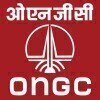
Oil And Natural Gas Corporation

Indian Oil Corporation
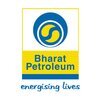
Bharat Petroleum
- Home >
- Interviews >
- Shell Interview Questions >
- Shell Piping Engineer Interview Questions















